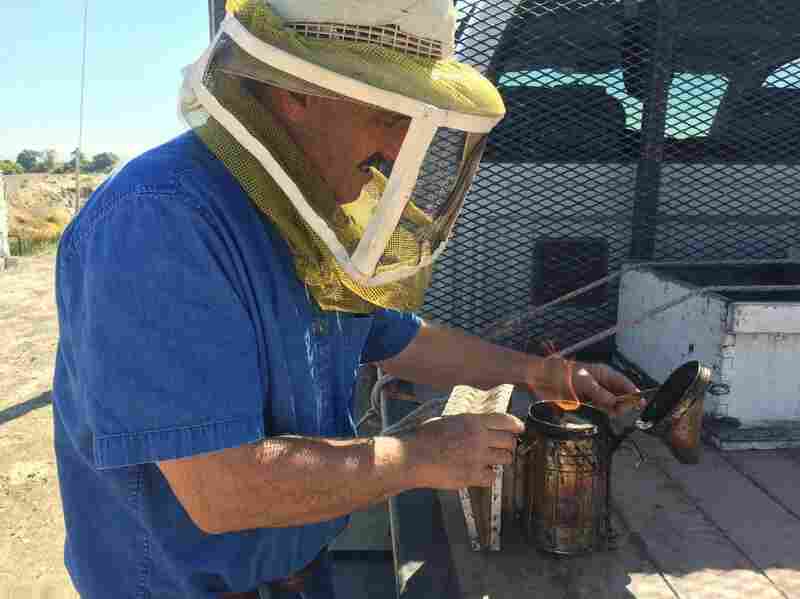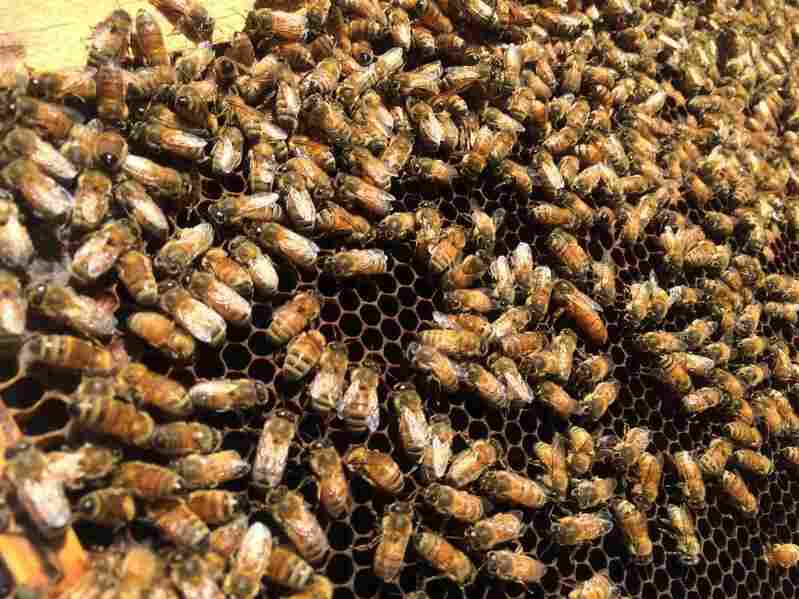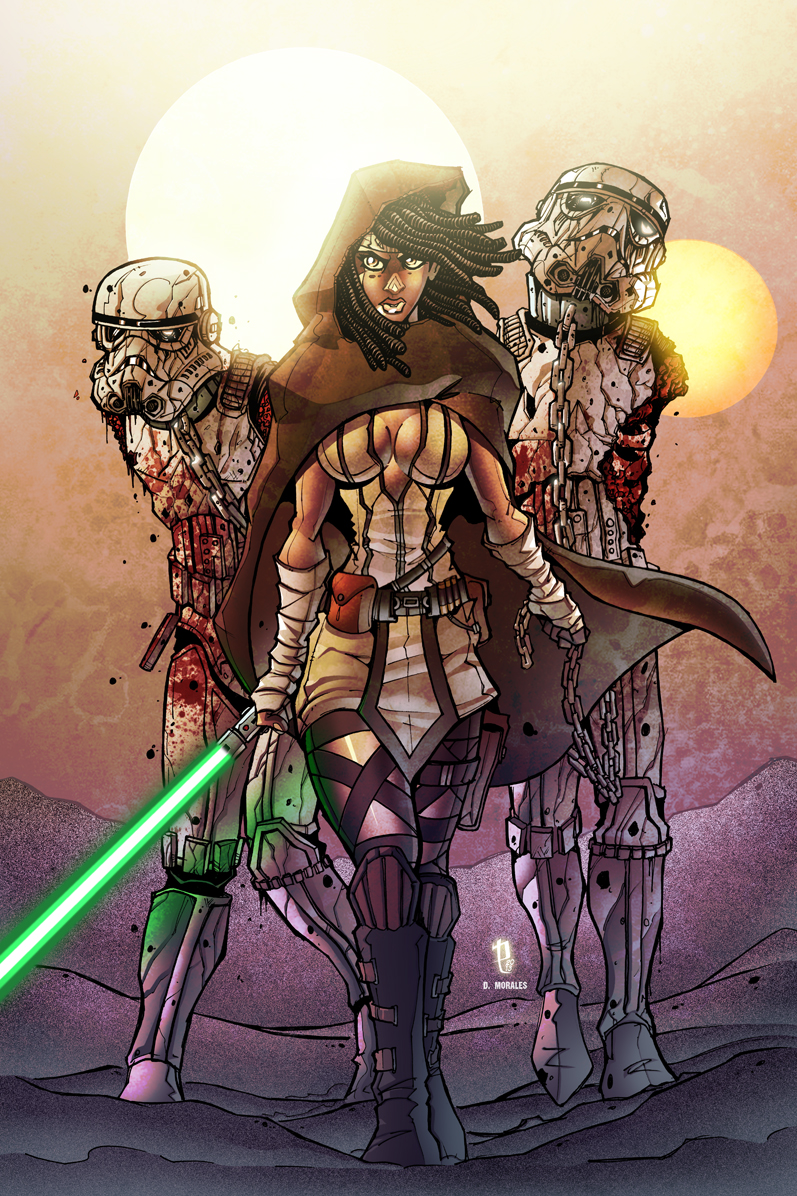Drought Is Driving Beekeepers And Their Hives From California
Dry conditions in California have limited the amount of pollen and nectar bees can collect. Ezra Romero/Valley Public Radio hide caption
itoggle caption Ezra Romero/Valley Public Radio
The drought in California over the past four years has hit the agriculture industry hard, especially one of the smallest farm creatures: honeybees. A lack of crops for bees to pollinate has California’s beekeeping industry on edge.
Gene Brandi is one of those beekeepers. He has a colony of bees near a field of blooming alfalfa just outside the Central California town of Los Banos. He uses smoke from a canister of burning burlap to calm the bees.
“It evokes a natural reaction, as if there were really a fire. And smoke helps to mask the pheromones that they communicate with,” Brandi explains.
Brandi has worked with bees since the early ’70s. He has more than 2,000 hives across the state, with around 30,000 bees in each one.
“I’m going to pull out this next frame here,” says Brandi, showing me some of his hives. “Looking for the queen again — there she is. She’s still laying eggs.”
The lack of rain and snow has reduced the amount of plants the bees feed on, which in turn limits the amount of pollen and nectar that bees collect. Normally, there are crops and wildflowers blooming here at any given time. This year in the state, there are just not enough plants and trees in bloom to keep many commercial beekeepers profitable.

Gene Brandi uses smoke to calm the bees he works with. Ezra Romero/Valley Public Radio hide caption
itoggle caption Ezra Romero/Valley Public Radio
But Brandi is managing to keep his head above water by strategically placing his bees in the few spots where there are both crops and water.
A well pumps water into a canal on this farm. Thistle blooms on the banks. Nearby, cotton and alfalfa crops are growing. It’s enough to keep his bees happy. But fallow farmland surrounds the area.
“In the drought years we just don’t make as much honey,” says Brandi. “I mean, we’re very thankful that we have places like this, where the bees have made some honey this summer.”
Brandi says because of the lack of natural food for the honeybees, many beekeepers have to feed their colonies processed bee food, which is a mixture of pollen and oil. They’re also feeding the bees a honey substitute made of sugar syrup.
“If there’s not adequate feed, we need to supply it. Otherwise, they’re not going to make it, they’re going to die,” Brandi says.
The quality of these meal substitutes isn’t as good as the real deal. They’re expensive, and it’s like eating fresh versus canned vegetables. Beekeepers are also supplying bees with water.
Tim Tucker, president of the American Beekeeping Federation, says the expense in providing food and drink to the bees is causing more beekeepers to take their bees out of California and into other states.
“Commercial beekeepers are having difficult times keeping bees alive, and they’re kind of spread out,” Tucker says. “They’re going to Montana and they’re going to North Dakota.”
That raises concerns among farmers who rely on those bees to pollinate the 400-plus crops grown in California’s Central Valley. It’s especially important to have them here in the spring, when the region’s 900,000-plus acres of almonds bloom.
“They’re scrambling, trying to figure out as many options as possible to make sure their bees stay healthy and are prepared for next year,” says Ryan Jacobsen, CEO of the Fresno County Farm Bureau. “That includes trying to move to newer areas and trying to plant new feed sources.”
Jacobsen also notes that this drought is really the second punch to the beekeeping industry in the past 10 years. Each winter, as much as 40 percent of the honey bees in the West disappear due to the unexplained colony collapse disorder.
The expense of moving bees and the fear of weakening colonies are why beekeepers like Gene Brandi have taken the risk of not sending their bees out of state.
“Bees are like cattle, in the sense that the pasture can be overcrowded. And even though we have less forage then normal, it’s still more forage then other parts of the state,” says Brandi.
And just like every other farmer in the region, Brandi and his beekeeping counterparts say rain and snow are the only true answer to reviving the California beekeeping industry.
This entry passed through the Full-Text RSS service – if this is your content and you’re reading it on someone else’s site, please read the FAQ at fivefilters.org/content-only/faq.php#publishers.









